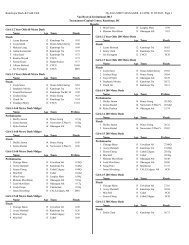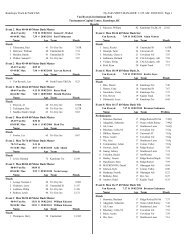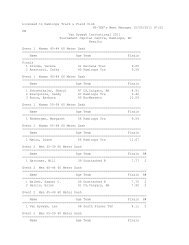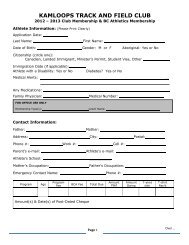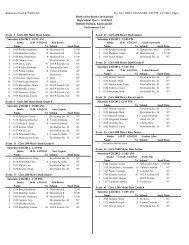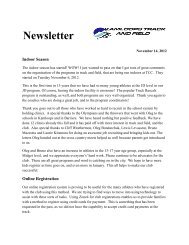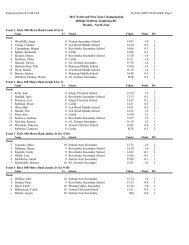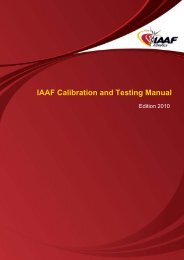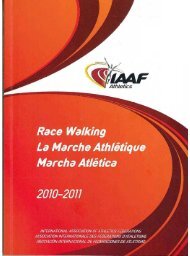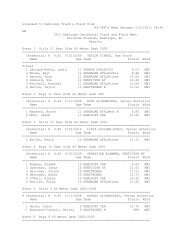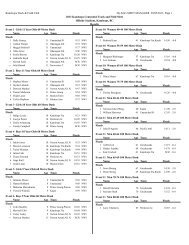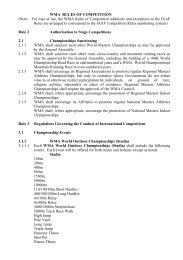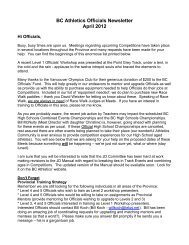2013 IPC Athletics Rules and Regulations - International Paralympic ...
2013 IPC Athletics Rules and Regulations - International Paralympic ...
2013 IPC Athletics Rules and Regulations - International Paralympic ...
You also want an ePaper? Increase the reach of your titles
YUMPU automatically turns print PDFs into web optimized ePapers that Google loves.
e) For all Track Records up to <strong>and</strong> including 200m, information concerning wind<br />
speed, measured as indicated in these rules, shall be submitted. If the wind<br />
velocity, measured in the direction of running, behind the athlete averages<br />
more than 2 metres per second during the race, the Record will not be<br />
accepted.<br />
f) For Records in Field Events:<br />
(i)<br />
(ii)<br />
(iii)<br />
The performances shall be measured either by three Field Judges<br />
using a calibrated <strong>and</strong> certified steel tape or bar or by an approved<br />
scientific measuring apparatus, the accuracy of which has been<br />
confirmed by a qualified Measurement Judge;<br />
In the Long Jump <strong>and</strong> Triple Jump, information concerning wind<br />
speed, measured as indicated in these rules shall be submitted. If<br />
the wind velocity measured in the direction of jumping behind the<br />
athlete averages more than 2 metres per second during the jump<br />
(including the run-up), the Record will not be accepted;<br />
World Records may be credited for more than one performance in a<br />
competition, provided that each Record so recognized shall have<br />
been equal or superior to the best previous performance at that<br />
moment;<br />
g) For Records in Road Racing Events:<br />
(i)<br />
(ii)<br />
(iv)<br />
(v)<br />
(vi)<br />
The course must be measured by one or more “A“ or “B“ grade<br />
IAAF/AIMS approved measurer as defined in Rule 2.5;<br />
The start <strong>and</strong> finish points of a course, measured along a theoretical<br />
straight line between them, shall not be further apart than 50% of<br />
the race distance;<br />
The overall decrease in elevation between the start <strong>and</strong> finish shall<br />
not exceed 1:1000 (i.e., 1m per km);<br />
Any course measurer who originally measured the course or another<br />
“A” or “B” grade measurer in possession of the complete<br />
measurement data <strong>and</strong> maps must validate that the course<br />
measured was the course run, normally by riding in the lead vehicle;<br />
The course must be verified (i.e., re-measured) as late as possible<br />
before the race, on the day of the race or as soon as practical after<br />
the race, preferably by a different “A” or “B” grade measurer from<br />
the one that did the original measurement;<br />
Note: If the course was originally measured by at least two “A” or<br />
“B” grade measurers <strong>and</strong> at least one of them is present at the race<br />
to validate the course, no verification will be required.<br />
<strong>IPC</strong> <strong>Athletics</strong> <strong>Rules</strong> & <strong>Regulations</strong> <strong>2013</strong><br />
Updated January <strong>2013</strong><br />
19



